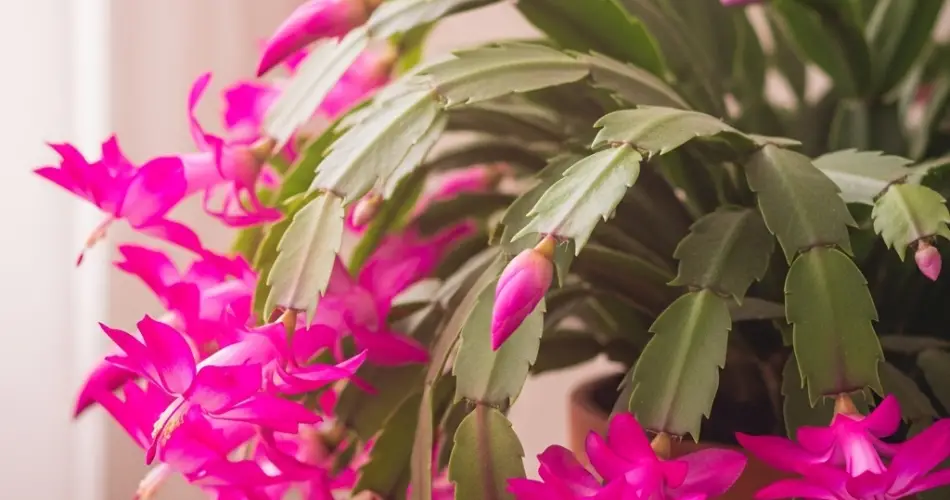The Christmas cactus (Schlumbergera spp.) is a beloved houseplant known for its vibrant, festive blooms that appear in winter. While it’s generally easy to care for, getting your Christmas cactus to flower at the right time can require a bit of coaxing. Fortunately, you can encourage blooming through completely natural means by mimicking the plant’s native environmental cues. With the right conditions and a little patience, you can enjoy a stunning floral display just in time for the holiday season.
Here’s how to naturally trigger flowering in your Christmas cactus.
1. Understand the Blooming Cycle
Christmas cacti are not true cacti, but rather epiphytic succulents native to the cloud forests of Brazil. They naturally bloom in response to specific changes in light, temperature, and water availability—signals that winter is approaching. To encourage flowering, you’ll need to replicate these environmental shifts.
2. Control Light Exposure
Light is one of the most important factors in getting your Christmas cactus to bloom. These plants are short-day bloomers, which means they need long periods of darkness to set flower buds.
What to do:
-
For about 4 to 6 weeks, expose the plant to 12–14 hours of darkness each night. This can be done by placing it in a dark room or covering it with a box or cloth in the evening.
-
Make sure it still receives bright, indirect light during the daytime to maintain healthy growth.
Avoid exposing the plant to artificial lights at night during this period, as even brief light interruptions can prevent blooming.
3. Lower the Temperature
Along with darkness, cooler temperatures help signal to the Christmas cactus that it’s time to bloom. In nature, dropping night temperatures in autumn and early winter trigger flower bud formation.
Ideal temperature range:
-
50–55°F (10–13°C) at night
-
60–65°F (15–18°C) during the day
Place the plant in a cooler room or near a draft-free window that stays within this temperature range. Avoid sudden fluctuations, as extreme shifts can cause stress or dropped buds.
4. Adjust Watering Schedule
During the bud-setting phase, slightly reduce watering to mimic the drier conditions of the plant’s native environment. Overwatering at this stage can delay or prevent blooming.
How to water:
-
Allow the top inch of soil to dry out between waterings.
-
Use room-temperature water and avoid letting the plant sit in water.
-
Once buds appear, resume regular watering to support healthy flower development.
Be careful not to underwater completely, as dry soil for extended periods can stress the plant and halt blooming altogether.
5. Avoid Moving the Plant Once Buds Form
Once flower buds begin to form, it’s important to keep the plant in the same location. Any sudden changes in light, temperature, or position can cause buds to drop before they open.
Tips:
-
Keep the plant away from vents, radiators, and cold drafts.
-
Maintain consistent lighting and temperature.
-
Avoid repotting or heavy pruning during this time.
6. Use Proper Soil and Container
A healthy root system is essential for flower development. Christmas cacti prefer slightly acidic, well-draining soil. A compacted or soggy potting mix can lead to root rot and poor blooming.
Best mix: Use a cactus or succulent mix with added perlite or orchid bark for better drainage. The pot should have drainage holes and be only slightly larger than the root ball.
Avoid overpotting—Christmas cacti tend to bloom better when slightly root-bound.
7. Feed Sparingly
Fertilizer plays a role in helping the plant build up the energy it needs to bloom, but it’s important to apply it correctly and at the right time.
-
During the growing season (spring to late summer), feed every 4–6 weeks with a balanced, water-soluble fertilizer.
-
In early autumn, stop feeding to prepare the plant for its dormant period and encourage flower bud formation.
-
Resume light feeding once flowering begins and continue monthly through the blooming period.
Final Thoughts
Encouraging your Christmas cactus to bloom naturally isn’t difficult—it just requires the right timing and environmental cues. By adjusting light, temperature, watering, and feeding practices, you can prompt your plant to produce vibrant blooms that brighten your home during the colder months.
Once you’ve helped your cactus bloom, keep enjoying the flowers by maintaining stable conditions and providing gentle care. With consistent attention year-round, your Christmas cactus can reward you with beautiful, timely blooms every winter.



